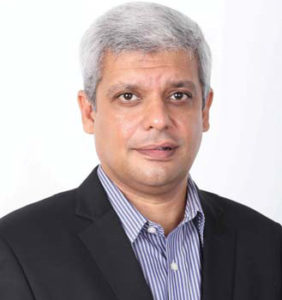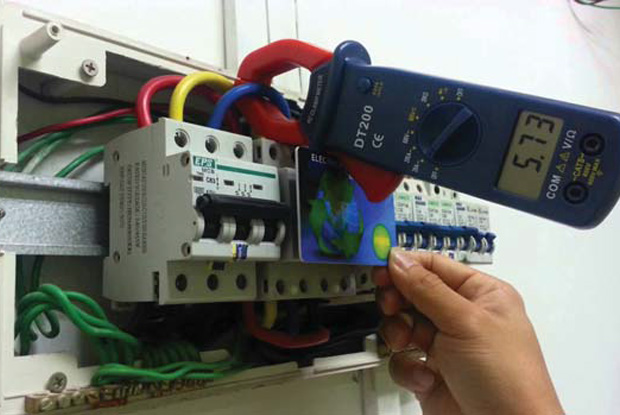
The whole world is busy trying to make the electricity grids smart. The Indian power sector is constantly wooing and being wooed by proponents of smart grids. Conspicuous by absence in this movement is any direct involvement of the electricity consumer. She/He is expected to be a passive recipient of whatever the Utilities (smart or otherwise) do “to him”, such as introduce Time-of-day tariff, apply Reliability Surcharge, increase Tariff, give Subsidy, etc. Not
many think of doing something “with him”.
In any other industry, the customer would be the king, or at least thought to be one. Not so in case of electricity.After all, electricity is an essential commodity that is not storable and sold by geographic monopolies at regulated prices. Vow! Each italicized word in the last sentence is loaded, not so much with double entendre, but loaded against the customer!
For the purpose of this article, let us define “customer” as a consumer who is honest, willing and able to pay for the electricity (or energy) he consumes. That would include most readers of this article. Now, think about it… how many of us ever looked at our electricity bill? When did we do it the last time? The reason for our non-involvement of electricity – something that we are buying and consuming 24 x 7 x 365 x life – is quite simple and profound at the same time, i.e., we use electricity blindly. Till date, we had no choice.
Smart Consumer?
How about creating a smart consumer who uses electricity smartly, not blindly?!
That does not necessarily mean using less electricity or more electricity (or energy). It means having better understanding and control of our energy needs, and thereby more intelligent choice of energy consumption. At least high value consumption at industrial or commercial premises has a vast potential of better energy management, which is hitherto untapped. Even in residential premises of upper & upper-middle segments of society, the energy spend is high enough to necessitate smart consumer behavior.
And what exactly would that entail? What choices are available to a customer in the realm of energy consumption? None? Think again. You have electricity available from the Utility grid at a certain price. This price itself varies by multiple factors such as your monthly consumption, time of day of consumption, month of year or season of consumption, your nature of premises, etc. Even for the same units of electricity consumed in a particular month by the same type of consumer, your bill amount (Rs. payable) could vary due to multiple factors such as prepaid billing (you can avail rebate), late payment (you have to pay surcharge), your sanctioned load vis-à-vis your maximum demand during the month, Power Factor of load at your premises, etc.
All this while we sometimes get a “feeling” that the Utility’s electricity bill is “high”! Every month, our electricity bill is impacted by a multitude of such factors and we are not even conscious of it. Or maybe we don’t care because “what difference would it make… it’s a fait accompli, isn’t it?”
The first step towards becoming a smart consumer is to know what energy-type I am consuming, how much, when, on what usage, and at what price. We need to have all this information fi rstly at instantaneous level in real time, and then in the form of analytical summaries that help us take insightful decisions and corrective actions. Many of us buy star-rated appliances or undertake energy audits, but how many of us “know” at what tariff will putting up a solar rooftop at our premises become financially viable? Or how much was our electricity consumption when our premises was locked and apparently not in use? Is every oil company and mobile tower company sure about whether their petrol pump dealer or the tower site operator is not misusing electricity or
backup diesel?
Knowing about our energy consumption and energy spend is the fi rst step towards becoming smart consumer. Knowledge is power, and knowledge of energy consumption equals the power of energy saving through monitoring and control. Today, technology can help us cross this bridge. A good example comes from AGL, Australia, wherein the Utility offers its consumers an online energy portal,at the touch of a tablet, showing complete details of electricity and gas consumption supplied by AGL; the online portal is free and exclusive to AGL consumers, and is accessible through web anytime anywhere.
Similar energy portals have now been developed by some pioneering companies in India, and their solution is already working at select industrial consumers. The same energy portal can be taken forward to medium load consumers (homes, offices, shops, etc.), as well as to Utilities who may also be interested in knowing the real time distribution of their energy demand on a google map. All this has now become a reality. With electronic prices falling over time, most upper-middle class families and virtually all commercial and industrial consumers can now afford their own personal energy portal – it may just be a phone call away.
While the consumers can take the initiative of deploying an energy portal solution at their premises at their cost, the true scaling up will happen when the electricity regulators mandate the Utilities to implement such deployment pan India. A policy intervention in this regard by the ministry of power and/or the ministry of science & technology will also help the cause further.
If we want to move towards the vision of 100 smart cities, then the piloting of such a mandate should be started with these hundred cities, so that not just the cities, but the people there also become smart citizens; the first step of becoming smart citizen is to become a smart consumer.







